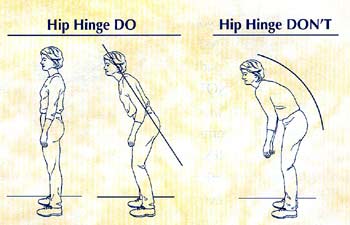 For the past few months I've been working with a relatively fast young woman (19min 5K) who'd grown weary of getting fit, getting injured, clawing her way back into shape, only to get injured again. Most recently, she'd successfully completed a long round of physical therapy for low back pain, specifically at her sacroiliac joint (SI Joint). She was and is determined to “do things right” so that she can enjoy running for a long time to come.
“Perfect”, I thought. That's a mindset I can work with.
For the past few months I've been working with a relatively fast young woman (19min 5K) who'd grown weary of getting fit, getting injured, clawing her way back into shape, only to get injured again. Most recently, she'd successfully completed a long round of physical therapy for low back pain, specifically at her sacroiliac joint (SI Joint). She was and is determined to “do things right” so that she can enjoy running for a long time to come.
“Perfect”, I thought. That's a mindset I can work with.
After a very thorough assessment, I determined that the best way I could help her was to show her how to strength train properly. She agreed she had very little true strength training experience and that strengthening her body would certainly go a long way toward 'bulletproofing' her against future injury.
Of course, one of my go-to bulletproofing exercises is the deadlift, and later, the kettlebell swing. With so many benefits from posture to hip mobility to force production (which makes ya faster) to total body strength, it's a no-brainer if you're gonna spend any time in the weight room.
But, before lifting anything, she had to demonstrate the “hip hinge” movement pattern. This is where her SI Joint issue became obvious to me. WAY too much rounding through the lower back.
Generally, no one should lift anything with a rounded back. Now, lots of folks will say they already know this. But knowing and doing can be two vastly different things and, in my experience, many people are not actually hinging through the hips even though they may think that they are.
This type of movement advice goes well beyond the gym. People tend to be lazy and instead of using their legs, they'll just round their back to look under the cabinet, grab the milk from the bottom shelf of the fridge, or to lift the grocery bag from the floor. Instead of using their powerful glutes, they'll rely on their back extensors and, over time, this can lead to back problems as the discs are pushed towards the back of the vertebrae.
So, without further ado, here is one of the training basics that you simply can't afford to butcher. No excuses!
http://www.youtube.com/watch?v=qTuKARgBxOQ
So, now that you know what the proper hinge looks like, have a peek around your gym. Are people doing the deadlift or swing correctly with a flat back? Do you notice anyone rounding their back and not hinging properly?
